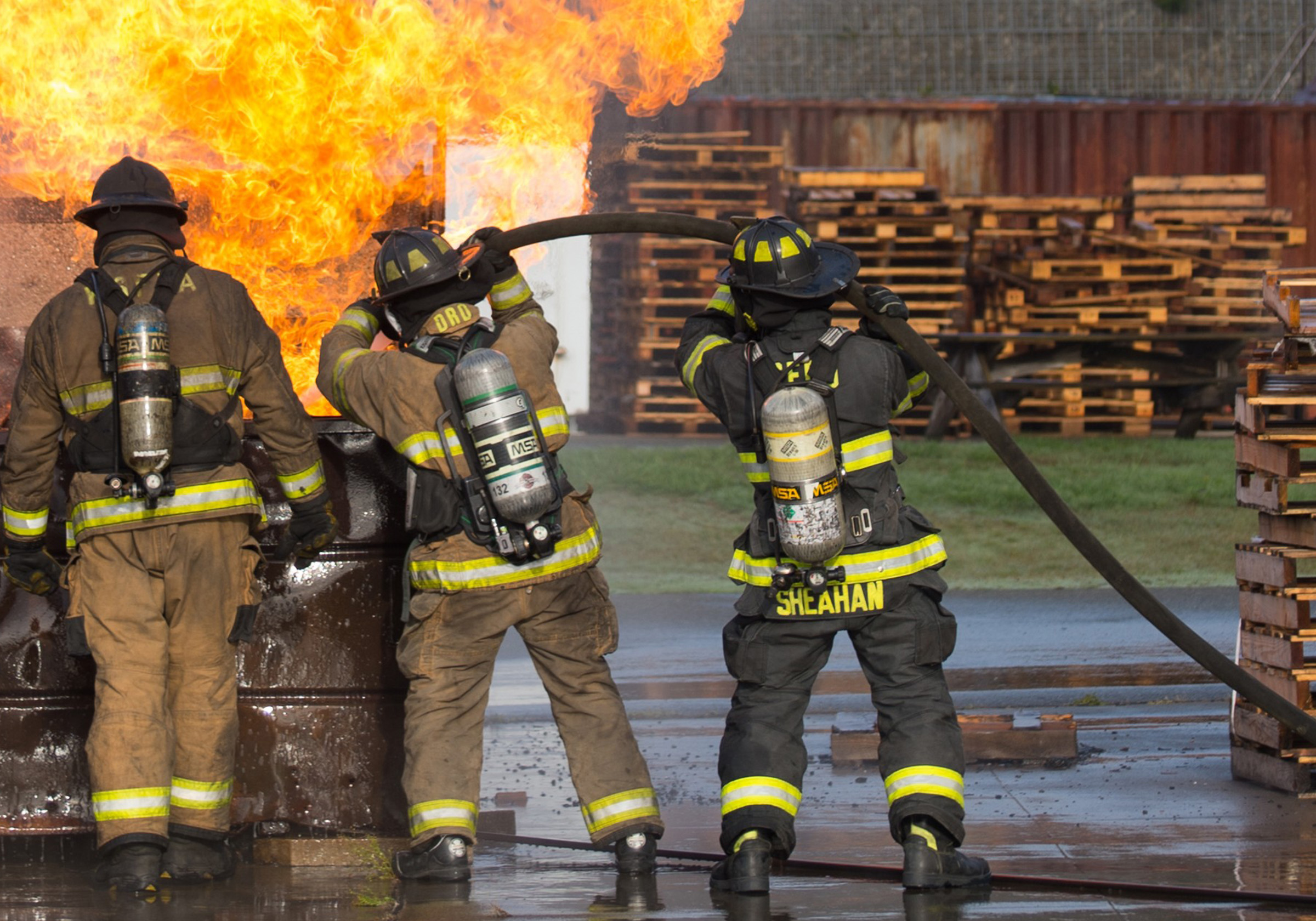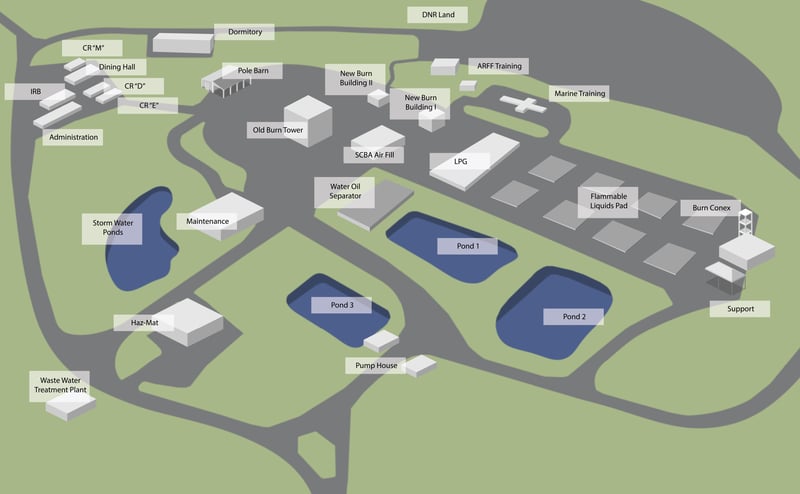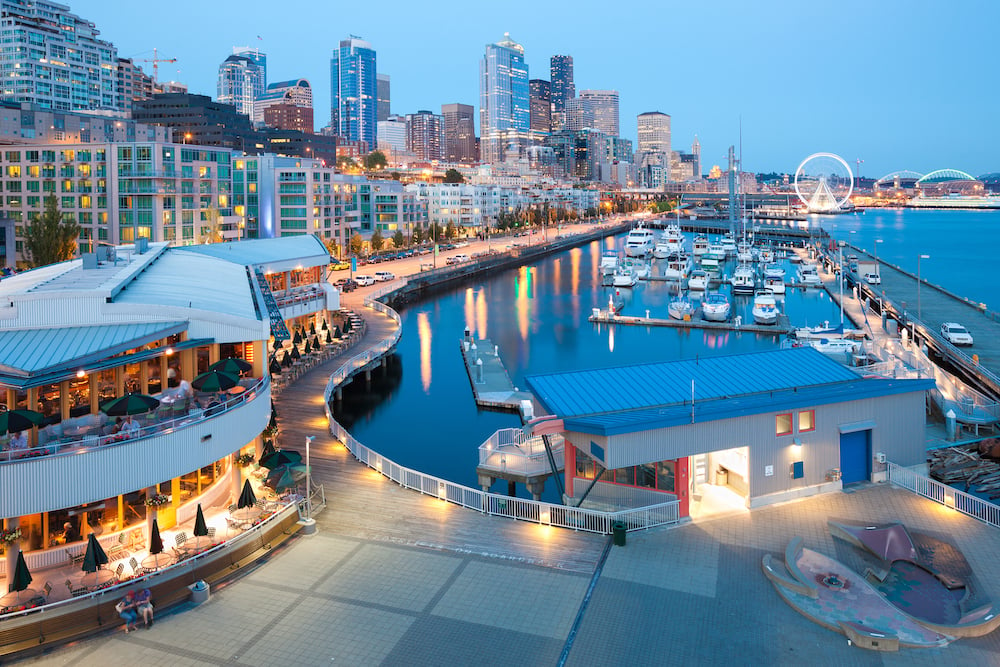"This place is like a Disneyland for firefighters."
If you've ever wondered where and how firefighters train to learn the ins and outs of their job, we've got an answer for you: the Fire Training Academy. Here in Washington state, nestled in the woods outside of North Bend, lies a magical place.
But this Disneyland is different. Instead of Mickey Mouse and his friends, the Fire Training Academy comes equipped with state-of-the-art facilities for replicating the conditions of real-world fire, providing recruits and seasoned veterans with the experience necessary for tackling complex situations. What's more magical than that?
We wanted to learn more, so we sat down with Kelly Merz, Commander at the Washington State Fire Training Academy. 
What is the purpose of the Fire Training Academy?
We are a 51-acre site located just east of North Bend, about five miles up from I-90. We provide training to both career and volunteer firefighters.
Organizationally, we fall under Washington State Patrol's umbrella and are a division within the state Fire Marshal's office.
We are unique in the fact that we still burn Class A materials - wooden pallets currently, and we use roughly about 24,000 pallets a year. Not a lot of facilities still conduct training in this way. Right now, we have a six-story burn tower and burn pits that we can utilize, all in the hopes of achieving real world conditions.
We can't ever replicate a true structural fire. But up here we get about as close as you possibly can.
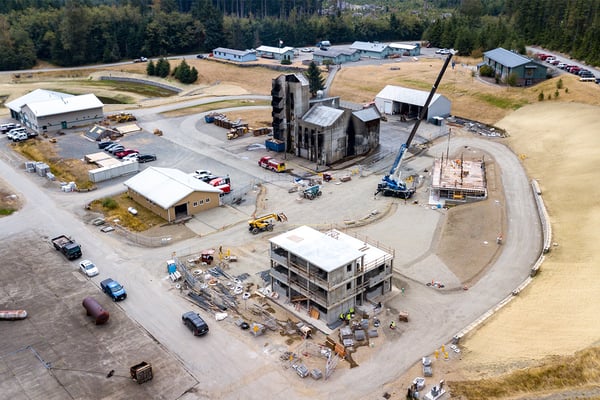 Overview of the Fire Training Academy,
Overview of the Fire Training Academy,
showing off the burn tower and other facilities.
Departments come up to learn about fire behavior. They utilize either our engines or theirs, running all sorts of drills. They make entry into structures. They do fire control, whether the means extinguishing fire or just learning different fire behavior dynamics. They also do the search and rescue, as well as ladder operations - just a myriad of different types of training that can happen here.
Do you know anything about the history of the site itself?
I believe in the 1960s there was a board that was formed saying, “hey, we need a facility to train firefighters.” It kind of progressed and went through this process until, in the 70s, they started looking at different sites.
There was a site in Auburn, there was a site in Enumclaw, a couple of other sites. But they ended up on this site - this used to be the quarry that was used to build I-90 going up over Snoqualmie, the expansion of the pass.
They decided on this location for a couple of different reasons.
It was kind of out of sight, out of mind. It’s also a little bit more central for the state - rather than being in Auburn or Enumclaw or up north a little bit. Most importantly was considering the smoke that we produce. It goes up into the atmosphere, and if you're down in the Puget Sound area, it might just sit there and linger. Up here on the edge of the Cascades, it disperses a lot better.
The facility was built in the early 80s and there was a dedication in 1984. Initially it was just a dirt road that came up here and they had one burn building and a few other facilities. It’s really grown from there.
Describe the facilities currently available to individuals training at the Fire Training Academy
The Fire Training Academy is comprised of a variety of training systems: classrooms, burn buildings, props. Basically, we can combine all these props and structures at our disposal to develop close-to-life fire scenarios, giving individuals training at our facility a very realistic training experience.
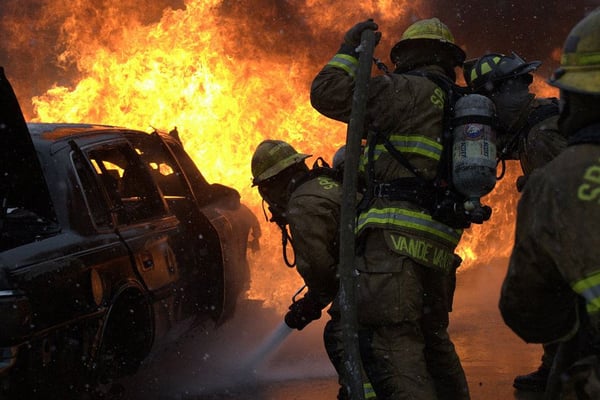 Various props, including vehicles, are used during training.
Various props, including vehicles, are used during training.
We use primarily Class B props, advanced training systems that use propane or other fuel to generate fire scenarios, but we also burn the Class A materials I mentioned earlier – mainly wooden pallets. We have forcible entry props, ventilation props, confined space props. We also have vehicle props, including a turned over tanker and smaller vehicles, all of which we can conduct burns on and simulate situations which will be experienced in the field. We teach fire behavior dynamics, search and rescue, ladder operations – everything in house.
Years ago, we brought in an ARFF (Airport Rescue Firefighting) prop that was up here that the Port of Seattle, Boeing, Paine Field and a lot of different agencies would use. Additionally, we have marine training props for shipboard fires. However, both the ARFF and marine props are currently out of use.
And of course, with fire there must be water - we have training water pumps and fire hydrants.
Since the founding of this facility, buildings have been added, including administrative offices, rehab spaces, storage, classrooms, and a dining hall. In 2009, we added a 44-bed dormitory. As we move into the future, more changes will be made, in hopes of providing trainees greater access to practical resources.
Pond 1-3 – Storage for water used in firefighting operations
Storm Water Ponds – Runoff holding pond
Water Oil Separator – Removes oil from water before reuse
Pump House – Powers domestic water system
Haz-Mat – Enclosed training facility with classroom, bathrooms, and various props
Flammable Liquids Pad – Area for conducting gasoline or diesel fires using various props
LPG – Propane props and BLEVE (boiling liquid expanding vapor explosion) training facility
Burn Conex – Ventilation lab for demonstrating various ventilation profiles
Support – Covered break area with bathroom
Marine Training – Shipboard firefighting facility
ARFF Training – Aircraft Rescue and Fire Fighting facility and props, including large frame aircraft
CR “M” – Recruit classroom
CR “D” + CR “E” – Additional classrooms
Dormitory – Total capacity of 44 beds
Instructor Resource Building (IRB) – Administrative area
Pole Barn – Covered rehab area with fans and whiteboard
SCBA Building – Self-contained breathing apparatus oxygen filling facility
What makes the facility unique?
The most unique aspect of our facility is how we handle water.
We’re in the middle of the woods, so any dirty water we use is liable to end up directly in the ecosystem around us. However, we’ve developed a green alternative, and we have all the necessary permitting through the Department of Ecology in King County.
All our training water, what we use in training operations, gets recycled. Nothing goes downstream, and everything stays on site: treated, cleaned, recycled.
The entire facility is built on top of concrete pads. Because of this, we can capture all the water used during a burn and send it to the on-site wastewater treatment plant. There’s an oil water separator - all the training water is collected and flows through that, settles, and any oils or anything will rise to the top, allowing us to skim that off. When we reintroduce the water to the holding ponds, its fresh water, ready to be used again.
Another unique aspect about the site is its location.
We’re remote. I mean, a lot of people don’t even know that we exist up here. That allows us to do things we wouldn’t be able to do in more populated areas, including utilizing Class A materials in our burns. As I said, they chose this area for a reason - if we were down in the Seattle area, or another major population center, it would be tough having a bunch of fire smoke and stuff going up into the sky, blowing everywhere.
Finally, I’d say another unique aspect of the operation we run is our self-sufficiency.
Once staff come on-site, it's not like they can take a lunch break and run down to North Band and grab some lunch. There’s not enough time, so we have everything we need here.
We have our own well, our own septic, our own water treatment facility. We’ve also got a backup generator that we can run off for months.
What training/certification is offered at the Fire Training Academy? Who participates in training at the facility? What associations use it?
One of our primary offerings are the trainings we provide to recruits.
We run three weekday recruit academies every year, each consisting of 12 weeks, Monday through Thursday – it’s something like 496 total hours of training. This gives recruits a lot of burn time, more so than anywhere else to my knowledge.
During these academies, we have set burns for them. It’s kind of a crawl, walk, run type of deal. We introduce them to fire behavior, hydraulic ventilation, and other concepts. We show them how to use water effectively, demonstrating attacks that can be used to extinguish the fire and what happens when water is applied incorrectly. Then we move on to two room fires and then increase from there.
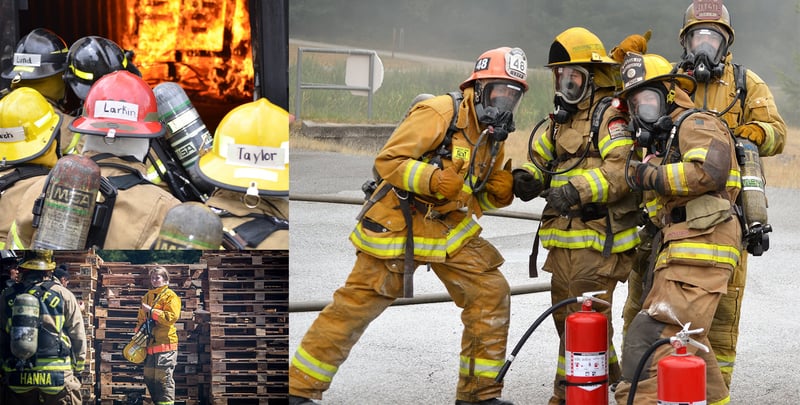
The whole time, we follow the NFPA 1001, or the Standard for Fire Fighter Professional Qualifications. This basically lays out all the minimum job performance requirements (JPRs) for career and volunteer firefighters to achieve before they can be certified.
Outside of recruits, a bunch of different agencies, fire departments, come up and do burns. Most of these agencies are local, within driving distance – we don’t get a lot that come from out of state. We are mandated by code to prioritize the training of volunteers. Then we focus on combination firefighters and finally the career folks.
In general, we make the space available to basically anybody that wants to come up and use it for training purposes.
We had the Department of Natural Resources come up for almost three months – they were doing their training for wildland firefighting. We have local law enforcement come up, including the Washington State Patrol which we are a part of. There’s bomb training up here. The ATF comes up here. Washington State Ferries has come up here as well, providing basic firefighting training to employees that work on their ships. We also have a program with Washington State University.
Being remote, the Army likes to utilize our facility to do their training. They come in, they fly up with their helicopters, fast rope down, and practice objective based target training. Basically, whatever they want to accomplish, we do whatever we can to support.
We’ve also had different private companies come up, including insurance companies. Amazon has come up to conduct research, SpaceX too.
It’s a myriad of different kinds of users. We look at it this way: if we can provide the facility and they present a plan that is safe, and has value, we are going to do whatever we can do to help them out.
Could you provide more insight into the training you do with volunteer departments?
As I mentioned, we’re mandated to prioritize volunteer training above all else. And since we primarily cater to local agencies, we realized that we lacked the ability to train smaller volunteer departments outside the Puget Sound corridor.
We developed a program called Regional Direct Delivery, aimed at bringing training out to volunteer departments where they are.
Currently, we’ve only got one individual running the program right now – he puts about 50,000 miles a year into delivering different training props to volunteers around the state. In total, he helps to train about 1000 volunteers each year. However, it’s our goal to propose legislation that will increase staffing for this program.
If you want to learn more about volunteerism, there’s a cool documentary called “Odd Hours, No Pay, Cool Hat”. It’s sponsored by John Deere and highlights volunteer firefighters across the country, including our facility.
How many firefighters attend training annually?
On average, we train about 5000 people a year.
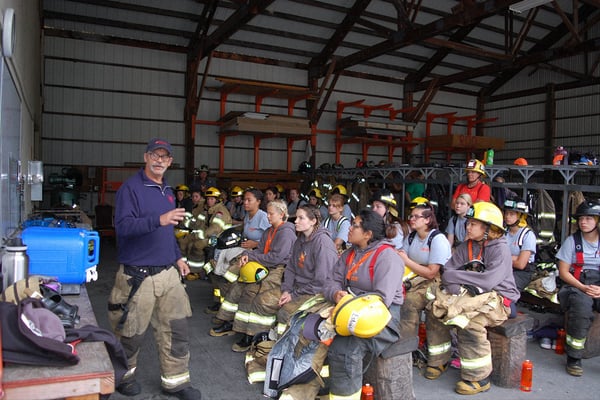 Trainees attend a classroom session.
Trainees attend a classroom session.
Most training occurs during the spring and fall, and we experience downtime starting mid-November to the middle of January - that is primarily due to snow. That gives our maintenance crew the opportunity to fix any props that might need to be fixed, gives our instructional staff the opportunity to go over lesson plans and make any changes that might need to be done. It can also be slow during the summer.
What upgrades have been implemented or are in the works?
Currently, we are working to develop a new master plan, with a couple distinct stages.
Phase One is what we’re doing right now, constructing new burn buildings.
The inauguration of the first two new burn buildings takes place in August 2023. They are going to greatly increase our capability to meet the fire service needs. The two new buildings are meant to replicate real world scenarios: one is a residential structure with a daylight basement and the other is a three-story apartment building. Both include ventilation props on the roofs.
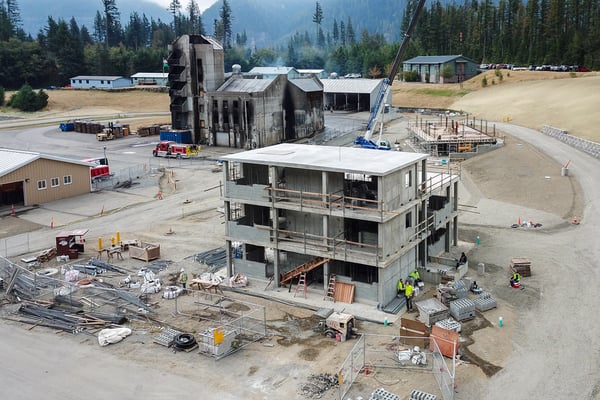 The two new burn structures under construction.
The two new burn structures under construction.
The second part of Phase One is to build a new burn tower to replace our current six-story structure, which is going to be taken out of commission for live fire training. If you look at the Puget Sound area, there’s not a whole lot of room for expanding outward; municipalities are growing up, building up with tall apartment buildings. We want to have a facility that mirrors these developments, business space on the ground level and apartments above, giving firefighters the ability to train on buildings they might see within their jurisdiction.
Phase Two is less defined, more of a laundry list of facilities and structures we want to build.
One thing we want to build are dirty classrooms. Currently, we don’t want firefighters coming up into the classroom in their dirty gear, covered in carcinogens that can contaminate the space. It’s our plan to build dirty classrooms near the burn buildings, allowing those who participate in training to immediately enter the classroom, talk about what happened, what they did right, what they did wrong.
Some other things we want to build are additional bathrooms, a new administrative building that has classrooms incorporated into it, an additional dormitory, and a pallet storage area.
How does funding for the facility work?
We have our primary funding from the fire service premium tax – we get 20% of that money. Even though we are technically a part of the Washington State Patrol, we don’t get any funds from them. 100% of our funding comes from that tax, bringing our biannual budget to about $8 million.
Needless to say, we don’t have the funding to make lots of improvement, but we are slowly upgrading the facility when and how we can.
Any additional thoughts?
Overall, the Fire Training Academy is a great facility, considering what we can do and what we can provide up here. I would put this up against any state training facility in the country. We have great staff, great instructors.
This place has so many capabilities – we just need the money to do it.
A dedication ceremony for the two new burn buildings took place in August 2023.
Want to learn more about the Fire Training Academy? Check out their resources here.




